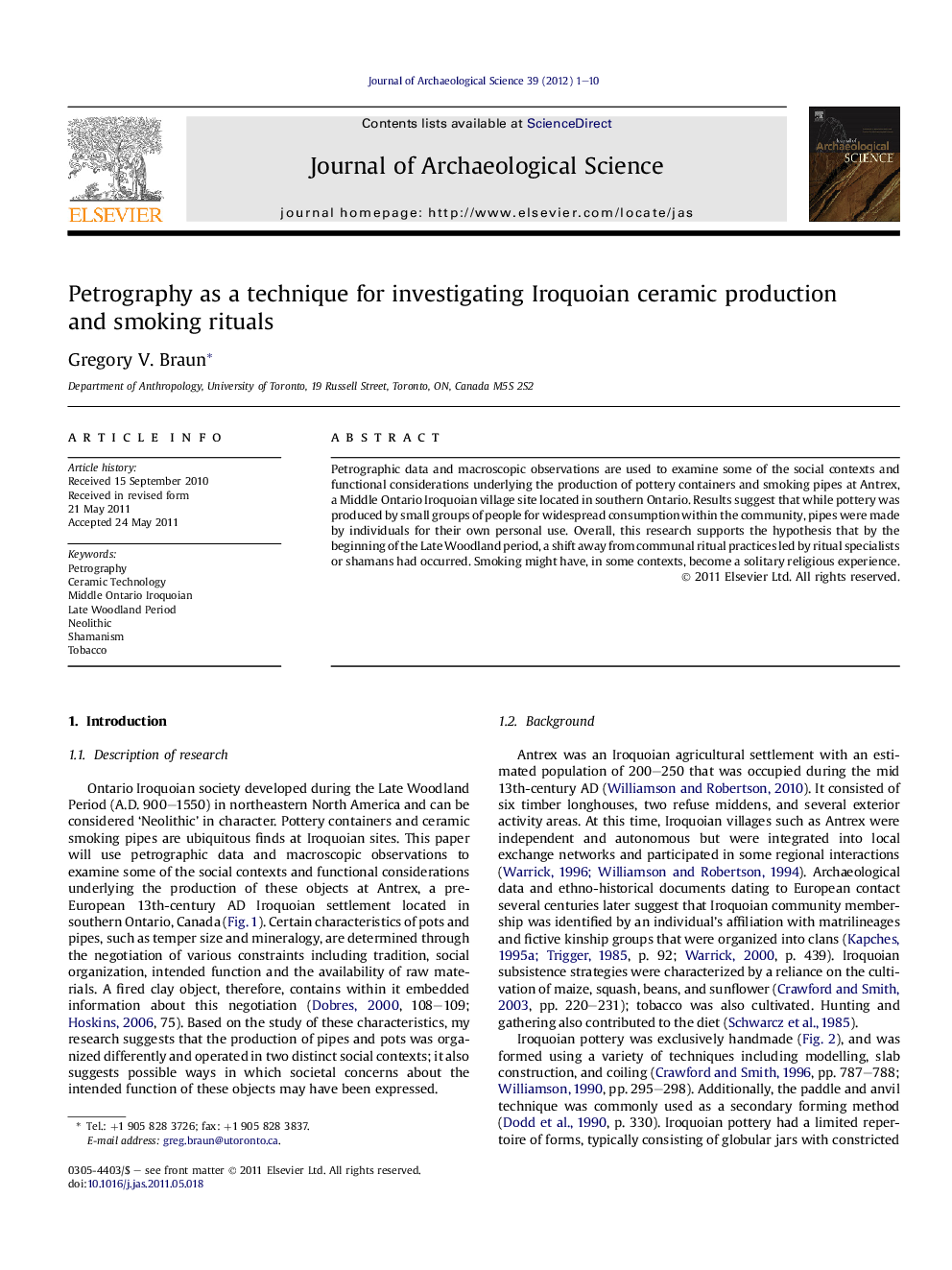| Article ID | Journal | Published Year | Pages | File Type |
|---|---|---|---|---|
| 1035914 | Journal of Archaeological Science | 2012 | 10 Pages |
Petrographic data and macroscopic observations are used to examine some of the social contexts and functional considerations underlying the production of pottery containers and smoking pipes at Antrex, a Middle Ontario Iroquoian village site located in southern Ontario. Results suggest that while pottery was produced by small groups of people for widespread consumption within the community, pipes were made by individuals for their own personal use. Overall, this research supports the hypothesis that by the beginning of the Late Woodland period, a shift away from communal ritual practices led by ritual specialists or shamans had occurred. Smoking might have, in some contexts, become a solitary religious experience.
► Petrographic analysis of Middle Iroquoian smoking pipes and pottery containers. ► Variation in pipes much greater than that seen in pottery. ► Pottery made by small group of people for the community, pipes made by individuals. ► Raw materials for pots and pipes were chosen for their symbolic value. ► May indicate changes in shamanistic practices and smoking rituals.
